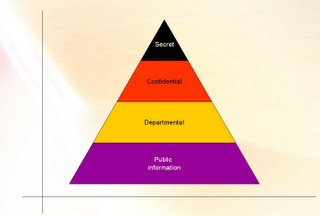Organizations & new structures
In the future, the focus on hiring people should be not so much on their current skills and experience (Knowlegde i+e) but their learning capacity and team work (A.k.a how well they collaborate with others).
To motivate these future workers, the way we reward them has to change significantly. We need to be able to measure knowledge contributions and impact in the organization by tracking them down. One way is to have the knowledge repository integrated with the payroll system. Then a rating system where team feedback can be collected could be used as a validation mechanism so that payments can be increased (or decreased) in a certain range based on people's contribution. Not sure how good can be, but it should make the salary go up as well as down so that people know the impact of their contributions , a strong incentive to be collaborative.
The structure of this organization looks very different. Here is a summary:

Teams Description
Business Promotion & Finance Team
- Former sales, and financial team.
- Sales is no longer the focus, the focus is in the customer, and promoting a well thought and excellent product.
- Rotation: Projects team
- Overall leadership, inspirational and organizational
- Setting Organizational Vision
- Define main strategies
- Monitors performance and new projects
- Rotation: Feedback team.
- Project teams developing products and services for outside customers and Inside Employees.
- Rotation: Promotion & Finance
Feedback & CR Team
- Creates surveys, forms, track, analysis of customer feedback. Works very close with customers to learn their needs.
- Conserve statistics and historical information for future reference.
- Applies same methodologies inside the organization
- Rotation: Design and improvement team
- Policy design, rules and processes.
- Reviews current surveys and recommends new and improved methods and processes
- Rotation: Any and All Teams.
- In charge of creating and monitoring all training and learning aspects of the business.
- In charge of the knowledge repository
- Sharing and collaboration of books and any relevant material for employees.
- Responsible for implementing 4 elements of the Fifth Discipline.
- Rotation: Any and All teams.
- Responsible for providing anything and everything the business needs to perform and execute; Includes Legal, IT, Human resources, Purchasing, etc.
- Rotation: Projects Team, DI.


